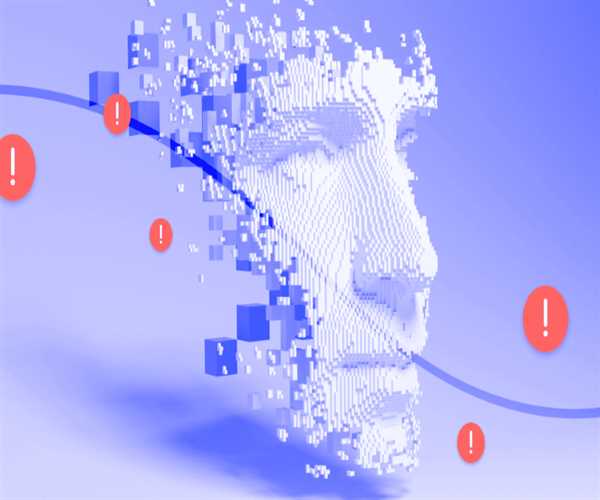In the era of advanced technology and artificial intelligence, the rise of deep fake content poses a significant challenge to the authenticity of digital media. Detecting deep fake content has become a crucial task to safeguard the integrity of information and media. In this blog, we will explore various methods and insights into the detection of deep fake content.
Understanding Deep Fake Technology:
Deep fake technology utilizes deep learning algorithms, particularly generative adversarial networks (GANs), to create highly convincing synthetic media. These algorithms analyze and synthesize patterns from vast datasets, enabling the generation of images, videos, and audio that closely resemble real content.
Methods for Detecting Deep Fake Content:
Forensic Analysis of Artifacts:
One method for detecting deep fake content involves analyzing artifacts left behind during the generation process. Deep fake algorithms may introduce subtle but detectable imperfections, such as unnatural blinking patterns, inconsistent lighting, or distortions in facial features. Forensic analysis tools scrutinize these artifacts to identify discrepancies that indicate manipulation.
Facial Biometrics and Micro-Expressions:
Deep fake detection can leverage facial biometrics and micro-expression analysis. Real facial expressions exhibit nuances and micro-movements that are challenging to replicate accurately. Technologies that analyze facial landmarks, blink rates, and subtle expressions can help distinguish between genuine and deep fake content.
Deep Learning Models for Detection:
Counteracting deep fake technology with its own counterpart, deep learning models are developed specifically for detection purposes. These models are trained on large datasets of both real and deep fake content, learning to recognize patterns indicative of synthetic manipulation. As deep fake techniques evolve, these detection models also undergo continuous improvement.
Analysis of Audio Patterns:
Deep fake content is not limited to visual media; it extends to audio as well. Voice synthesis algorithms can mimic a person's voice with remarkable accuracy. To counter this, audio forensics tools analyze patterns in speech, pitch, and intonation to identify anomalies that may indicate the presence of synthetic audio content.
Consistency Checks Across Modalities:
Deep fake detection strategies often involve cross-modal consistency checks. This means comparing information from different modalities, such as aligning facial expressions with corresponding audio content. Inconsistencies between visual and auditory cues can signal the presence of deep fake manipulation.
Blockchain Technology for Content Verification:
Blockchain technology is explored as a means of content verification. By timestamping and securely storing media content on a blockchain, it becomes challenging for malicious actors to manipulate or replace the original content without leaving a trace. Blockchain-based solutions aim to ensure the authenticity and integrity of digital media.
Insights into Deep Fake Detection Challenges:
Advancements in Deep Fake Technology:
As deep fake technology continues to advance, detection methods must evolve at a comparable pace. The cat-and-mouse game between deep fake creators and detection experts poses an ongoing challenge, requiring constant innovation in detection techniques.
Generalization Across Diverse Content:
Detecting deep fakes becomes more challenging when faced with diverse content types and contexts. Models trained on specific datasets may struggle to generalize across a wide range of scenarios, making it imperative to create robust detection systems capable of handling various content styles.
Real-Time Detection Requirements:
The prevalence of real-time content consumption on social media platforms and other online channels necessitates the development of detection methods that can operate in real-time. Quick and accurate identification of deep fake content is crucial to preventing its rapid dissemination.
Ethical Considerations:
Deep fake detection efforts must navigate ethical considerations, especially concerning privacy. Balancing the need to identify and counteract malicious manipulation with respect for individuals' privacy rights poses a complex challenge in the development and deployment of detection technologies.
Collaboration Across Disciplines:
Addressing the deep fake challenge requires collaboration across various disciplines, including artificial intelligence, computer vision, audio processing, and cybersecurity. A multidisciplinary approach enables the development of more comprehensive and effective detection solutions.
Future Directions in Deep Fake Detection:
Explainable AI for Transparency:
Explainable AI, which aims to provide clear and understandable reasoning behind algorithmic decisions, holds promise in the realm of deep fake detection. Building transparent models enhances user trust and allows experts to analyze and understand how the detection system operates.
Continuous Training and Adaptation:
Deep fake detection models need to undergo continuous training and adaptation. Staying updated with the latest advancements in deep fake creation techniques enables detection systems to evolve alongside the evolving landscape of synthetic media.
Public Awareness and Education:
Raising public awareness about the existence of deep fake content and educating individuals on how to discern between authentic and manipulated media can be an effective preventive measure. An informed audience is better equipped to identify and report suspicious content.
Collaboration with Technology Platforms:
Technology platforms, including social media networks and content-sharing websites, play a pivotal role in combating the spread of deep fake content. Collaborating with these platforms to implement robust detection mechanisms and content moderation practices is essential for mitigating the impact of deep fakes.
Conclusion:
Detecting deep fake content requires a multifaceted approach that combines technological innovation, interdisciplinary collaboration, and ongoing adaptation to evolving threats. As deep fake technology becomes more sophisticated, the development of advanced detection methods and the cultivation of a vigilant and informed public are essential steps toward mitigating the potential harms associated with synthetic media manipulation. By staying at the forefront of research and technological advancements, the digital landscape can better protect itself against the deceptive influence of deep fake content.




Leave Comment